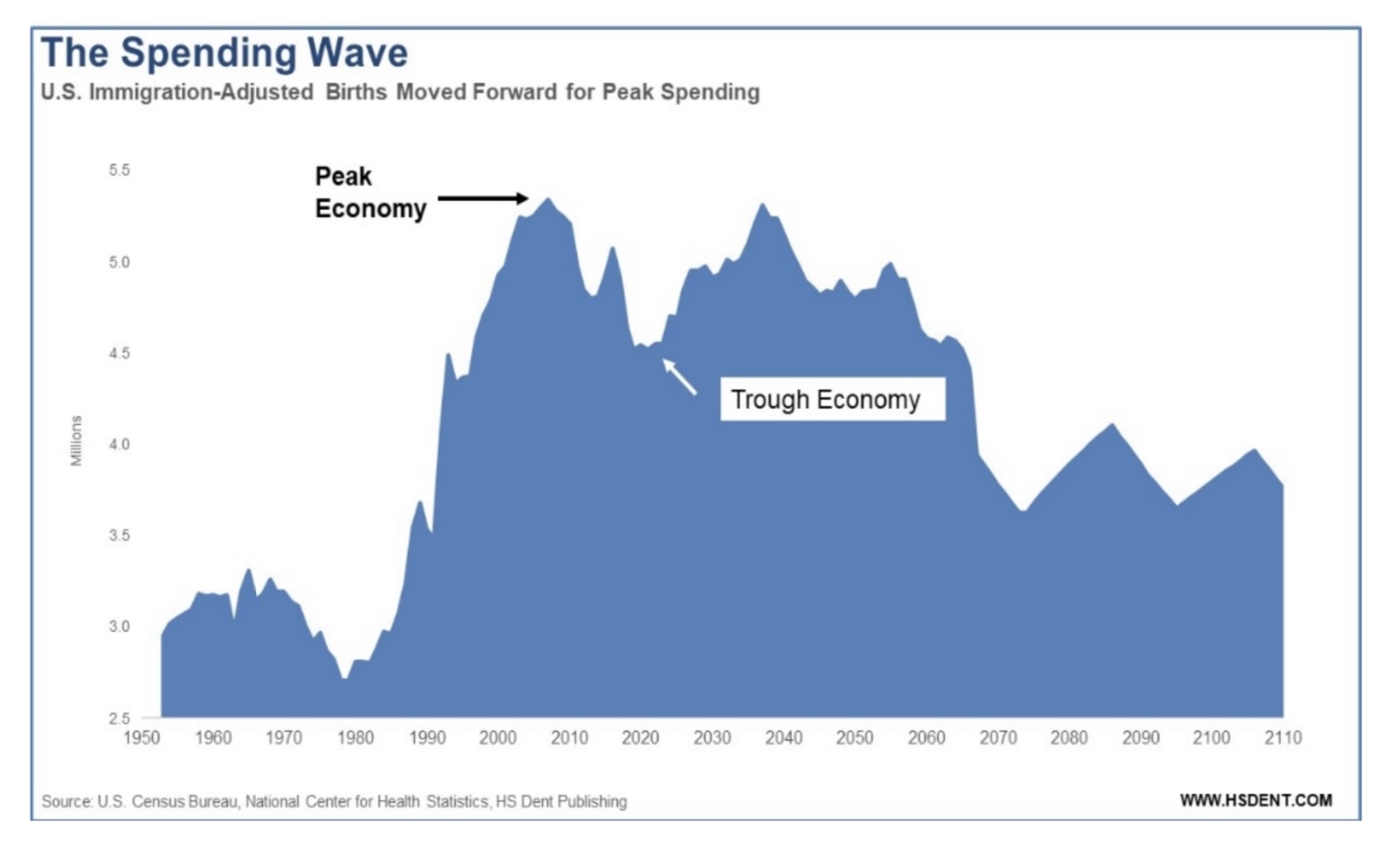Mitigating Inflation
by Sid Raisch
Let’s get right to the point. Inflation is emerging as a crisis just in time for our peak of spring business.
I’m hearing talk of Group clients who are thinking of lowering their margin expectations by passing along only their cost increases in some price increases, especially on higher cost items, but also on lower price high volume items. This notion is primarily in fear that customers will not have as much disposable income to pay so much more. This thinking is based on what I believe to be incomplete if not faulty logic. Before it goes further it is important to carefully consider all sides of the sentiment.
A quick thing before I delve into this. I just walked through a fully loaded for spring IGC all except outdoor shopping areas which are snow covered. The place is LOADED with hard goods, bag goods, watering supplies, home decor, and patio furniture. There were no less than 10 employees on the clock. One was waiting on a customer at checkout. Another was polishing up houseplants and did acknowledge me with a small talk comment that was easily ignored. The others were talking among themselves. I was there at least 15 minutes walking through the place looking over the assortment of their own house brand and other common IGC distributor offerings, and looking for price tags on the furniture. I’m sure those employees were talking about inflation and fretting over whether their customers could afford to buy much this year, and only that one person even looked my way. BEFORE you read another word about inflation forward this to all your people so they can take at least one step toward helping customers who come anyway.
Onward!
It IS our job to keep our companies healthy in all the ways we can control, and also to protect them from the psychological terrorism of worry over events we cannot control.
It is NOT our job to decide whether our customers can afford to buy what we sell at a higher price in light of inflation and the rising costs of the essential needs in their life when what we sell is optional because it is not like milk. (The faulty logic begins with the fact that milk is indeed NOT essential as a source of nutrition or calcium which can be obtained less expensively and more effectively from other sources, like some raw vegetables such as broccoli). It is also a proven fact that plants have psychological benefits, and as an extension may help a person overcome thoughts of suicide, or murder even if they’re in fear of inflation.
History is repeating itself with a rise of inflation that happened in the late 70’s and early 80’s, but probably not the way we are being led to believe. This is a macro-economic dynamic caused mostly by adjustments in the marketplace in response to a shift of available labor.
We need to focus on our own micro-economic response to meet the expectations of our customers within our own businesses. (Start with doing a better job of providing service to your customers than the IGC I mentioned above because that is in your control.)
The rapid expansion of our economy coupled with a labor crisis is not meeting the expected demands of consumers and businesses alike. We’re not happy with the service we’re receiving at restaurants and from some of our vendors, and we’re also not going to be happy with the quality of some of the goods we’re going to be receiving at even higher prices.
Here are two of the most important inflation causing issues:
First is shipping costs. You’re no stranger to this escalation. The ocean freight industry was paralyzed as a side-effect of Covid and they’re not letting themselves go out of business by not seeking new revenue (from higher rates) that they lost having expensive ships and people sitting dead in the water for months. This is largely an episodic event that will pass. These rates will go down but not to the previous level.
Second and more important is labor. Everyone is being squeezed for higher wages required to attract employees, as well as to keep those we have now. These costs will not go down and they will continue to rise.
These two things have triggered and are causing an inflationary spiral. We don’t have the choice as to whether or not we’ll participate in inflation. We’re paying more and that’s the way it is. And it will come to an end, at least for those who deal with it well and stay in business.
We do have choices. Here are some.
- First is to choose to assure our customers receive every penny of expected value we can deliver. If we want to chase away customers the fastest way to do that is to cut the quality and service they expect while they’re paying more.
- Trust the trends in our society that we’ve seen come to roost at our doorsteps during Covid. Consumers are now valuing plants and our industry disproportionately higher than they had previously and that's taking from the value they're placing in other things. People want plants because they now understand the mental and physical health benefits. This is a macro trend and it is not going away.
- Understand the related trends that supported the increase in appreciation of the benefits of plants, and be responsive to them. A large and increasing number of consumers are sustainability-minded (beyond most of our industry). All of GenX and GenY have grown up hearing about global warming and sustainability their entire lives. The global warming argument is not even an argument anymore. People want to live and work in healthy workplaces, not toxic ones. Organic is baseline expected and limited primarily by availability. The phrase “Nuke ‘em” is out.
- Hire Hard and Manage Hard - Jean Seawright has said Hire Hard and Manage Easy but there is no easy managing these days. We need to hire hard of course, but can’t let up on leading and managing. We need our best people and the best people we can find to create greater perceived value at a lower cost as a percent of revenue.
- Increase prices to increase revenue which will decrease labor as a percent of sales. Work to increase margins, so margin dollars can keep pace with the increased expenses across the board. Don’t sacrifice profit with a decision to keep prices lower than they need to be with your present margin requirements as they increase. Accept that customers will balance their spending with their income and credit capacity and desires. This is their job. It is not our job to do this for them. Allow the customer to adjust their purchasing and shift more of it our way, just like they’ve been doing! Remember, most of our customers are getting pay increases, just like they did in the early 80’s and in the Great Recession. Their cars are getting paid off, and they’re not buying as many new ones. Many more younger people are going without buying a car , or at least a second car, and are renting and using ridesharing and mass transit instead. Many college graduates are going straight into $80-120,000 jobs starting out with a higher income than their parents earn. Thanks to Mike Rowe’s Dirty Jobs efforts tradespeople are in high demand and are getting much more from the start. More people are buying homes for less monthly cost than renting. The demand and pricing of housing will likely continue to increase. Even if interest rates rise, they will be far below where it has been in the past for a while yet.
- Innovate to increase productivity. The only real solution to overcoming inflation is to cause deflation of your biggest and most rapidly rising costs - Labor and Costs of Goods. This is what we should be doing all of the time, not just during high inflation. It doesn’t mean cutting corners - instead fortify your corners, and cut waste. Begin with cutting wasted labor and eliminate steps that don’t need to be taken - meaning steps recorded on your iPhone as well as steps in a process. If you’re going to invest more in labor (which is a given), invest first in labor savings through more efficient processes and work environment. I’m amazed how much labor our industry wastes on covering and moving plants to protect from weather we know is coming every year instead of investing once in covering the shopping area to protect those plants more efficiently. Create labor savings to pay for the cover and get the side benefit of a better shopping environment and added perceived value for the customer. Covered shopping doesn’t cost - it pays.
- Lower Cost of Goods. If you cut goods that don’t provide profit and increase the prices of the rest you will effectively reduce your cost of goods as a percent of revenue. You’ve seen the GMROII numbers showing categories that are losing money, and haven’t responded to them? Guess what - these categories have high labor associated with them which is often performed by your more expensive associates. If there were ever a time to respond, it is now. Sell through that slow turning and labor-intensive inventory this spring while you have enough customers to carry it away, and don’t reorder or buy more of it.
It’s all about HOW you think about WHAT you’re thinking about - in this case, inflation. The first thing required for thinking correctly about inflation is a proper perspective. I’ve provided that above here. Read it again.
As usual, what you hear about inflation is intentionally made out to be worse than what is going on with inflation - just like will happen with the next coming weather event. Have you noticed that the news of bad weather is always worse than the actual weather that comes along? It’s no coincidence that the people spewing hyperbole have something at stake in the matter - us. Their only currency is listeners and viewers. If they don’t make enough noise about the weather, inflation, or whatever the news of the day is, we stop listening to them, and we turn our attention elsewhere - somewhere that matters. If the media doesn’t blow things out of proportion, they lose their audience (us), and in turn, their currency (ratings) with their advertisers.
We’re hearing all kinds of advice about inflation and must filter the good and useful from the bad and harmful. I’ve heard of some bad advice from an industry supplier who was suggesting that retailers don’t pass along all of their costs of his product line so they don’t scare away his customers. I wonder if his company is taking its own advice?
If you need more encouragement and useful guidance in this (and you do) I can help. Send a text now while you’re thinking about it and I’ll get in touch: 937-302-0423.
Your friend,


Before procrastination or other busyness steals another year from you Text or Call 937-302-0423 or send an email to [email protected] .
Sid Raisch is an advocate for family business leading growth, change, and results throughout US horticulture. Redefining the business future for consumer horticulture by understanding how the end-to-end supply chain needs to be redirected is a skill Sid has honed into an art. He has understanding and insight through inquisitive observations and extensive experience and has served as a trusted advisor helping transform both national and local businesses into more profitable and sustainable businesses. Developing national and international educational programs that create change in culture, community and company provides Sid venues with a front row seat creating effective and innovative business models.
Sid is a Certified Value Builder System Advisor, and currently serves as Chief Strategist and the Swiss Army Knife of Consultants to The Garden Center Group clients. Contact Sid at [email protected] or call or text 937-302-0423.
REMEMBER: Your interaction (by phone and email) with Group Service Providers such as Sid Raisch, Steve Bailey, Tim Quebedeaux, Robert Hendrickson, Jean Seawright, and John Kennedy are included in your retainer!


